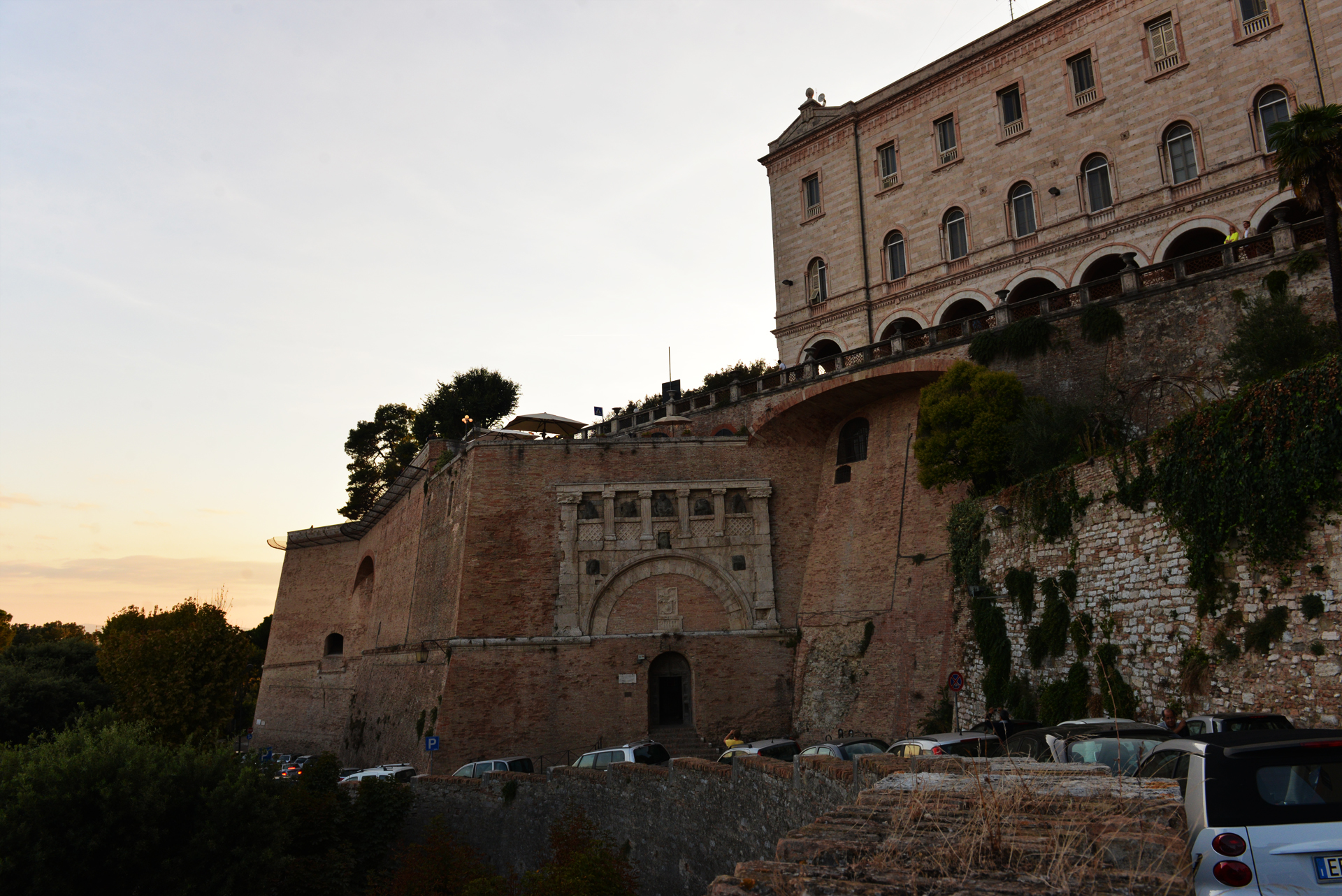Rocca Paolina on:
[Wikipedia]
[Google]
[Amazon]
 The Rocca Paolina was a
The Rocca Paolina was a
 The Rocca Paolina was a
The Rocca Paolina was a Renaissance
The Renaissance ( , ) is a Periodization, period of history and a European cultural movement covering the 15th and 16th centuries. It marked the transition from the Middle Ages to modernity and was characterized by an effort to revive and sur ...
fortress in Perugia
Perugia ( , ; ; ) is the capital city of Umbria in central Italy, crossed by the River Tiber. The city is located about north of Rome and southeast of Florence. It covers a high hilltop and part of the valleys around the area. It has 162,467 ...
, built in 1540-1543 for Pope Paul III
Pope Paul III (; ; born Alessandro Farnese; 29 February 1468 – 10 November 1549) was head of the Catholic Church and ruler of the Papal States from 13 October 1534 to his death, in November 1549.
He came to the papal throne in an era follo ...
to designs by Antonio da Sangallo the Younger
Antonio da Sangallo the Younger (12 April 14843 August 1546), also known as Antonio Cordiani, was an Italian architect active during the Renaissance, mainly in Rome and the Papal States. One of his most popular projects that he worked on des ...
. It destroyed a large number of Etruscan __NOTOC__
Etruscan may refer to:
Ancient civilization
*Etruscan civilization (1st millennium BC) and related things:
**Etruscan language
** Etruscan architecture
**Etruscan art
**Etruscan cities
**Etruscan coins
**Etruscan history
**Etruscan myt ...
, Roman
Roman or Romans most often refers to:
*Rome, the capital city of Italy
*Ancient Rome, Roman civilization from 8th century BC to 5th century AD
*Roman people, the people of Roman civilization
*Epistle to the Romans, shortened to Romans, a letter w ...
and medieval
In the history of Europe, the Middle Ages or medieval period lasted approximately from the 5th to the late 15th centuries, similarly to the post-classical period of World history (field), global history. It began with the fall of the West ...
buildings, including the Baglioni family's houses in the burgh of Santa Giuliana as well as over a hundred tower-houses, gates, churches and monasteries. It turned the former streets of the historic city centre into underground passageways, which are now open to the public.
The fortress was partially destroyed in 1848 then rebuilt by Pope Pius IX
Pope Pius IX (; born Giovanni Maria Battista Pietro Pellegrino Isidoro Mastai-Ferretti; 13 May 1792 – 7 February 1878) was head of the Catholic Church from 1846 to 1878. His reign of nearly 32 years is the longest verified of any pope in hist ...
in 1860 before being finally demolished in 1861 after the city was annexed by the Kingdom of Italy
The Kingdom of Italy (, ) was a unitary state that existed from 17 March 1861, when Victor Emmanuel II of Kingdom of Sardinia, Sardinia was proclamation of the Kingdom of Italy, proclaimed King of Italy, until 10 June 1946, when the monarchy wa ...
. The underground via Bagliona and the remains of the medieval quarter were then uncovered and restored in 1932, with restoration works in 1965. Part of the supporting wall survives on viale Indipendenza and a bastion on via Marzia, housing an exhibition space and museum.
Buildings and structures in Perugia
Military history of Umbria
{{Italy-struct-stub